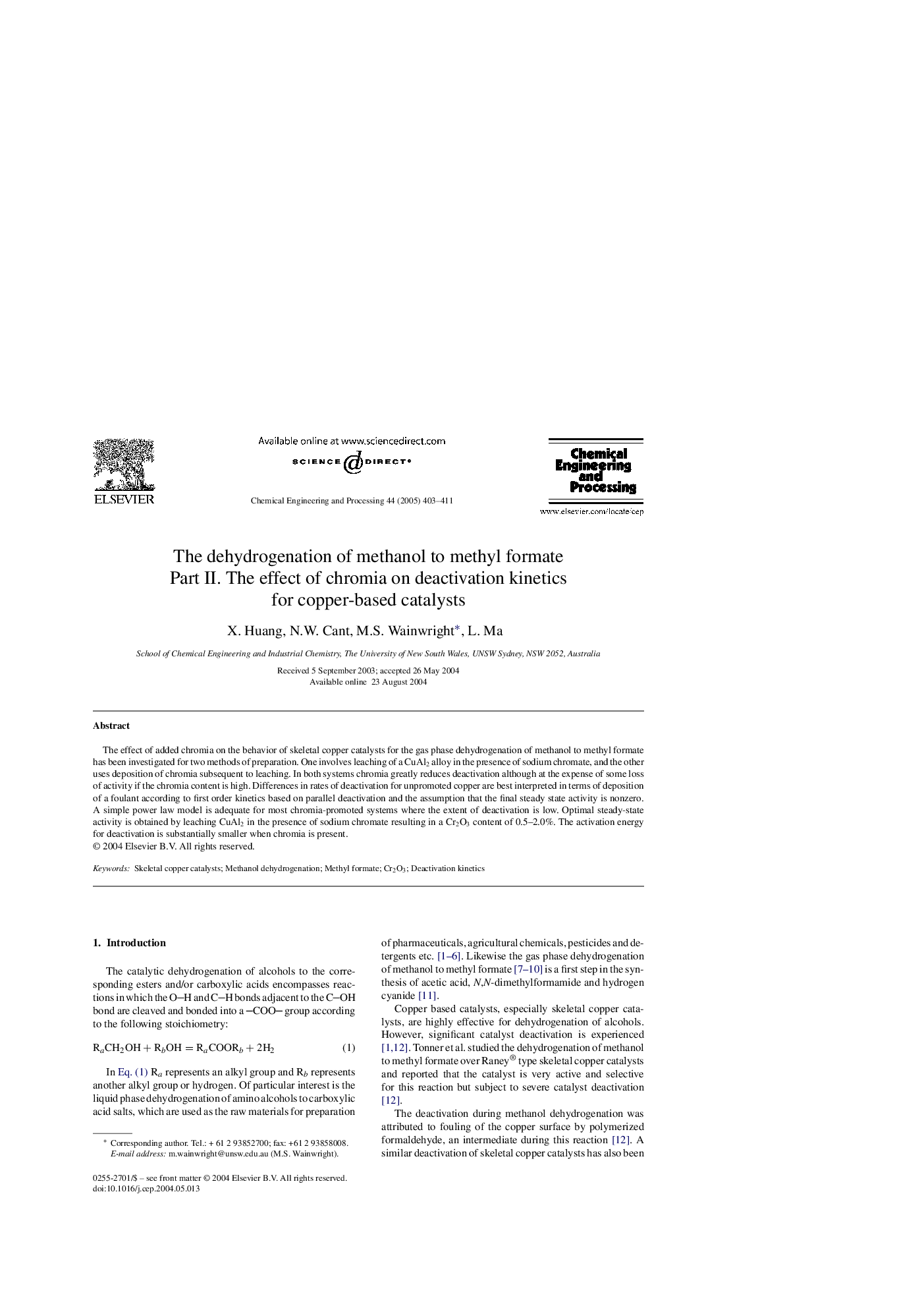| Article ID | Journal | Published Year | Pages | File Type |
|---|---|---|---|---|
| 10396963 | Chemical Engineering and Processing: Process Intensification | 2005 | 9 Pages |
Abstract
The effect of added chromia on the behavior of skeletal copper catalysts for the gas phase dehydrogenation of methanol to methyl formate has been investigated for two methods of preparation. One involves leaching of a CuAl2 alloy in the presence of sodium chromate, and the other uses deposition of chromia subsequent to leaching. In both systems chromia greatly reduces deactivation although at the expense of some loss of activity if the chromia content is high. Differences in rates of deactivation for unpromoted copper are best interpreted in terms of deposition of a foulant according to first order kinetics based on parallel deactivation and the assumption that the final steady state activity is nonzero. A simple power law model is adequate for most chromia-promoted systems where the extent of deactivation is low. Optimal steady-state activity is obtained by leaching CuAl2 in the presence of sodium chromate resulting in a Cr2O3 content of 0.5-2.0%. The activation energy for deactivation is substantially smaller when chromia is present.
Related Topics
Physical Sciences and Engineering
Chemical Engineering
Process Chemistry and Technology
Authors
X. Huang, N.W. Cant, M.S. Wainwright, L. Ma,
